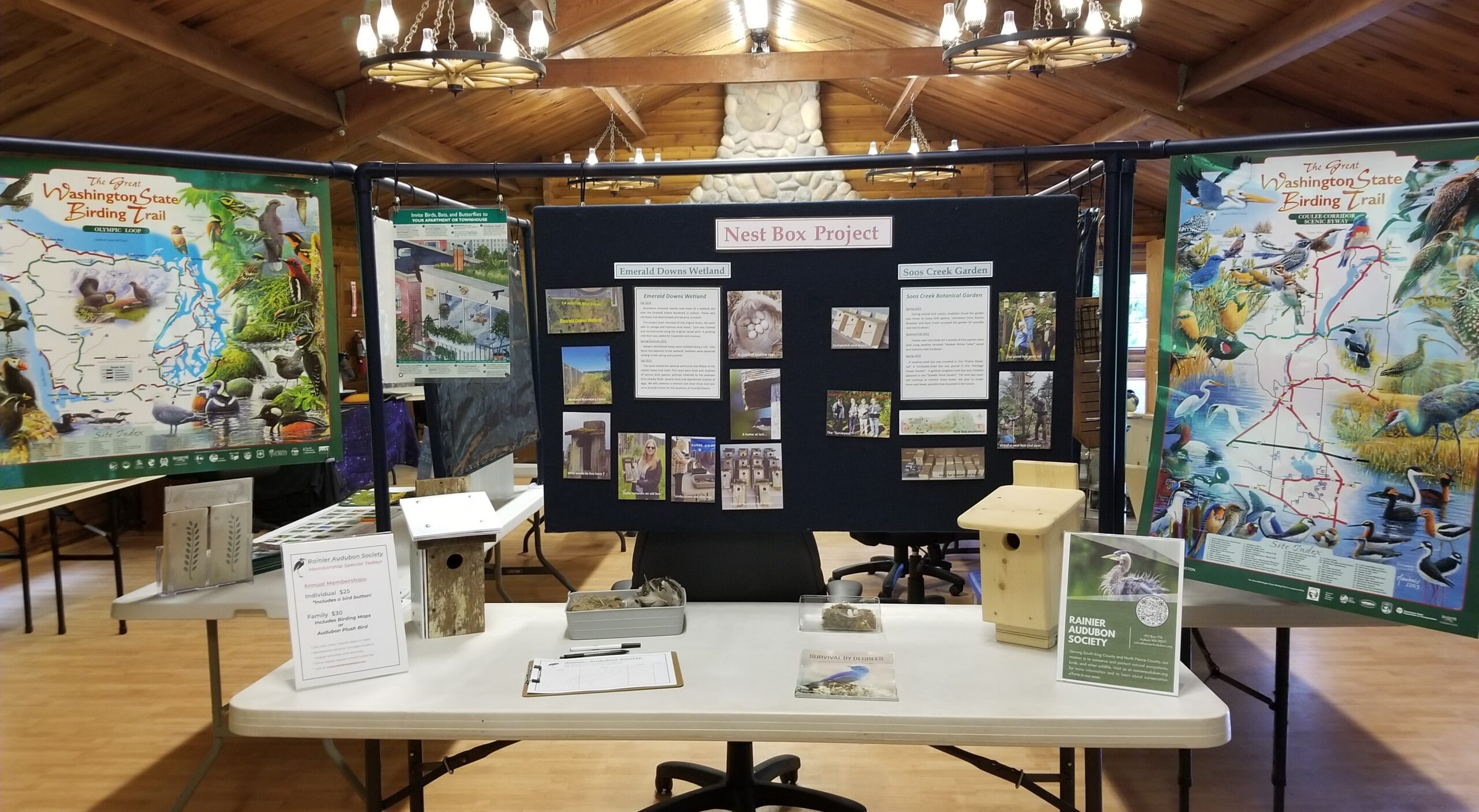
Mewsings from Millie – February 2024

(Reprinted with permission by Burien Wild Birds Unlimited)
You’ve heard of empty-nesters, how about early-nesters? My people have had a live bird cam on showing a Great-horned Owl sitting on two eggs in a nest in Savannah, Georgia. It got me wondering if birds in our part of the world nest early. It turns out some do. The Great-horned Owls that live here nest early as well as the Western Screech-Owl, Hairy Woodpecker, Wood Duck, American Kestrel, and the Anna’s Hummingbird.
The Great-horned Owl nests in trees such as cottonwood, juniper, beech, pine and others. It adopts a nest that was built by another species, usually Red-tailed Hawks or other hawk species, Crows, Ravens, Great Blue Herons or squirrels. They will also use cavities in dead snags, live trees, deserted buildings, cliff ledges and human-made platforms. The nest consists of sticks and varies in size depending on which species originally built it. The owl lines the nest with bark shreds, leaves, downy feathers plucked from its own breast, and fur or feathers from prey. Nests are seldom re-used. The Great-horned Owl lays 1 – 4 dull white, nearly spherical eggs that have a rough surface. The newly hatched owlets are helpless with closed eyes, pink skin and some white down on the upper parts.
The Western Screech-Owl nests in tree cavities or uses nest boxes. It adds no nesting material to the cavity. It lays 2 – 7 white eggs. These owlets hatch with eyes closed, covered in white down.
The Hairy Woodpecker nests in a cavity 8 – 12 ” deep excavated in the dead stub of a living tree or in a dead tree. The inside is wider at the bottom to accommodate the eggs and the incubating bird. The nest is typically bare except for woodchips for the eggs and chicks to rest upon. The nestlings are born naked with pink skin, a sharp egg tooth at the end of the bill, and eyes closed. These babies are very clumsy.
Wood Duck breeding pairs look for a nesting cavity in a tree during the early morning hours. Nest cavities can have openings as small as four inches or as large as a couple of feet across. Cavity depths average about two feet but can be deeper. Wood Ducks will also use nest boxes. The Wood Duck mom lays 6 – 16 creamy white to tan eggs. The ducklings are hatched alert with full coats of down. A day after hatching, the ducklings will use their clawed feet to climb the wall of the cavity and jump out of the nest.
The American Kestrel is also a cavity nester. It is incapable of excavating one on its own so it relies on old woodpecker holes, natural tree hollows, rock crevices, nooks in buildings and other human-built structures. The male searches for nest sites, presents them to the female, and she makes the final decision on a nesting location. Typically the nests are along woodland edges or in the middle of open ground. American Kestrels will also use nest boxes. The American Kestrel lays 4 – 5 eggs that are white to yellowish or light reddish-brown, mottled with violet-magenta, gray or brown. The hatchlings are feeble with sparse, white down over pinkish skin. Their eyes are partially open by the 1st or 2nd day after hatching.
The female Anna’s Hummingbird chooses the nest site, usually a horizontal branch of a tree or shrub 6 – 20 feet off the ground near a nectar source. The nest is made of plant down from cattail, willow, leaves, thistle or small feathers and is woven together with spider webs and insect cocoons. The outside is decorated with lichens and mosses. The Anna’s Hummingbird lays 2 white eggs. The nestlings are born with eyes closed, very little down, and are virtually helpless.
All this talk about naked babies is making me shiver! I think I’ll go curl up on my cozy Seahawks welcome mat and warm up.
Until next time, Millie, the Muse of Mews



